Thanks Trevor, David and Wurzel. We had a great Christmas and New Year and hope that you all, and everyone else did too

A bit quieter this week which has given me chance to look back on the moths that came to my garden moth trap in 2022.
Garden Moths 2022
I ran my trap on just 41 nights in 2022 and ended up with 146 macros species and 73 micro for a total of 219 species. This compares with 2021 when I ran the trap on 59 nights for a total of 222 species made up of 132 macros and 90 micros. The lower number of nights that I ran the trap this year was mostly accounted for by runs of poor conditions for moths, with it being either clear and cold or too windy. Whilst there would often have been some moths flying in these conditions, reports that I saw of poor catches the following mornings usually validated my decisions.
The total number of individual moths counted this year was 3516 (2217 macro and 1299 micro) compared with a 2021 total of 3227 moths (1891 macro and 1336 micro) which shows that despite trapping on 18 fewer nights this year my species count was broadly similar and I actually caught more individual moths. This is just a quick comparison of the past two years as before 2021 I did not keep count of the number of nights that I trapped and in any case as I don't run the trap the same number of nights every year, any comparison of numbers can only ever be in a broad sense.
I had 18 new species for the garden (NFG) in 2022 made up of 12 macros and 6 micros as listed below.
Small Clouded Brindle.
Beautiful Golden Y.
Eyed Hawk.
Scarlet Tiger.
Scarce Silver Lines.
Engrailed.
True Lovers-knot.
Black Arches.
Sallow.
Beaded Chestnut.
Gem.
Six-belted Clearwing – to pheromone lure in daytime.
Udea olivalis.
Cydalima persectalis (Box-tree Moth).
Eucosma hohenwartiana.
Cameraria ohridella (Horse Chestnut Leaf Miner).
Clavigesta purdeyi (Pine Leaf-mining Moth)
Scrobipalpa occellatana (Beet Moth).
The Small Clouded Brindle is one that I have possibly overlooked in the past due to its similarity to some forms of Common Rustic aggs, although the latter tend to be on the wing after the SCBs are nearly finished and apparently those still around tend to be in poor condition.
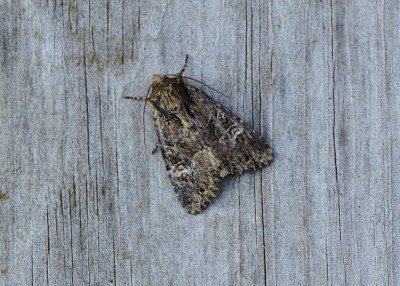
- Small Clouded Brindle - Coverdale 09.06.2022
The Beautiful Golden Y is less often seen than its close relative the Silver Y but is still ‘supposedly’ common and widespread over most of Britain.
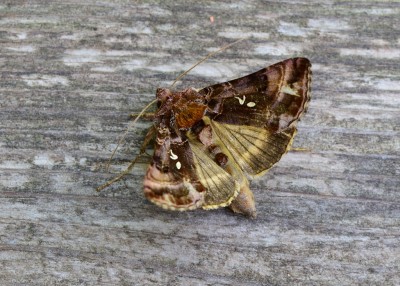
- Beautiful Golden Y - Coverdale 16.06.2022
The Eyed Hawk was one of only two Hawk Moth species that I had in 2022, the other being Poplar Hawk. This nice female left me with a batch of eggs that I reared and from which I currently have the pupae in the bottom of the fridge ready to lay out for emergence later this year.
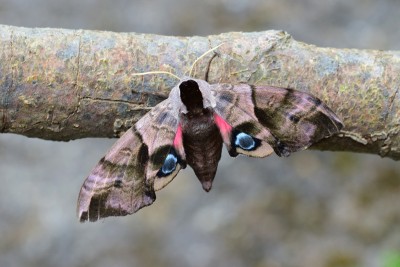
- Eyed Hawk Moth - Coverdale 17.06.2022
The Scarlet Tiger Moth has been expanding its range across the midlands in recent years and has been seen in some locations in large numbers so I was hoping they would turn up here sooner or later.
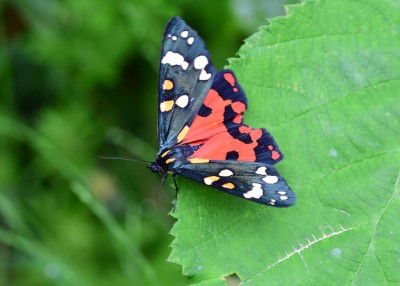
- Scarlet Tiger - Coverdale 17.06.2022
The Scarce Silver-lines is a widespread but local woodland species whose larvae feed on oak. With very few oak trees close to me I am always glad to see a wandering oak feeder and this was one of the most striking.
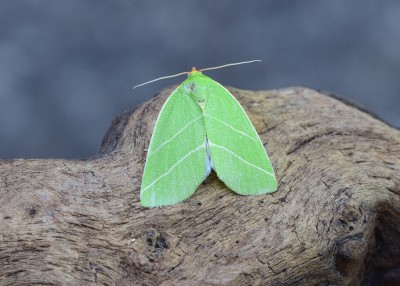
- Scarce Silver-lines - Coverdale 22.06.2022
The Engrailed is another species that I may (just possibly) have overlooked in the past due to a passing resemblance to a small Willow Beauty or Mottled Beauty.
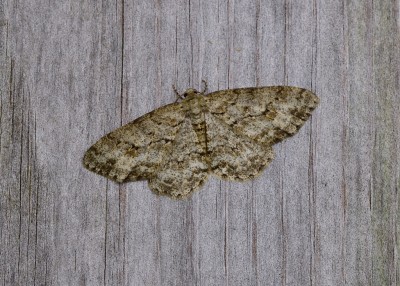
- Engrailed - Coverdale 02.07.2022
The True Lover’s-knot is a moorland and heathland specialist whose larvae feed on heathers. It is known to wander widely from these habitats and sometimes breeds on garden varieties of heather but it is still a notable record for my garden.
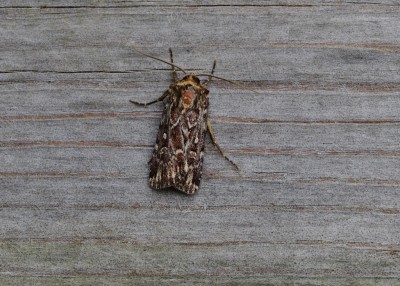
- True Lover's-knot - Coverdale 19.07.2022
Black Arches is a striking looking species that is most common in the southern half of the UK. It is another species that has been extending its range northward and is becoming more common in recent years.
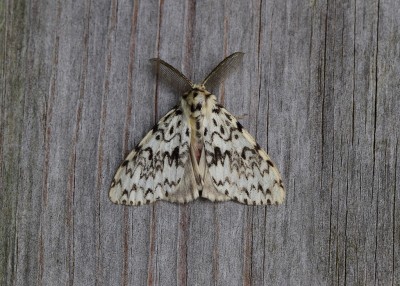
- Black Arches - Coverdale 14.08.2022
I usually see other species of ‘Sallow’ in most years so I was finally pleased to get ‘The’ Sallow this year.
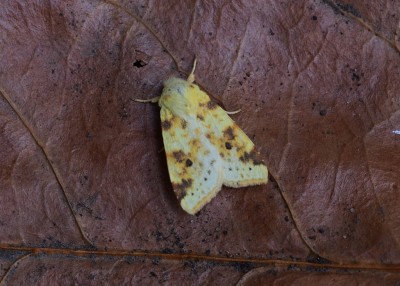
- Sallow - Coverdale 23.08.2022
The Beaded Chestnut is very similar to some forms of Lunar Underwing and I have been checking the latter carefully for some years now and was finally pleased to confirm my first one this year.
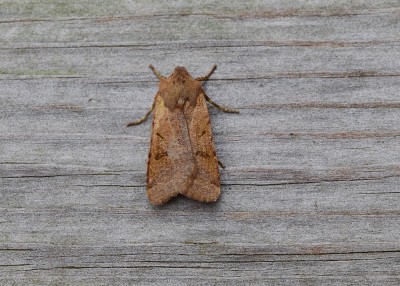
- Beaded Chestnut - Coverdale 03.10.2022
The Gem is a migrant which comes in every year and is more often seen in southern counties. I am aware of just two others recorded in Warwickshire this year, one at Ryton Country Park near Rugby and one in a garden in Bidford-on Avon.
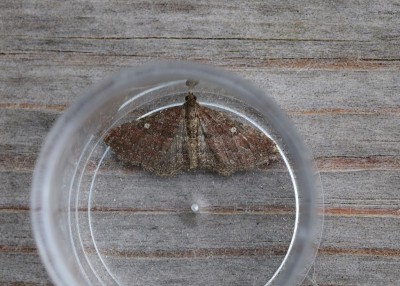
- Gem - Coverdale 03.10.2022
I have spent some time over the past couple of years looking for Six-belted Clearwings using a pheromone lure around my local patch and finally had some success this year, not only finding a few at Blythe Valley Park near Solihull buy also having one come to the lure in the garden.
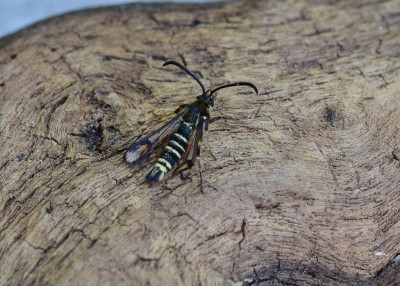
- Six-belted clearwing - Coverdale 18.07.2022
Udea olivalis is a fairly nondescript looking micro that is fairly common across the UK and which was bound to turn up here sooner or later.
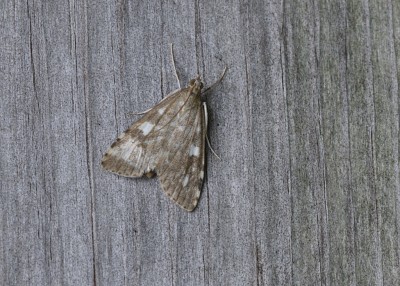
- Udea olivalis - Coverdale 02.06.2022
Given the way that the Box-tree Moth is spreading across the country since it was first recorded in Kent in 2007 and having turned up in Warwickshire a few years ago, it was only a matter of time before I saw one here. This species is originally from Asia and is considered an invasive pest of box trees but there is no denying that it is an attractive looking moth.
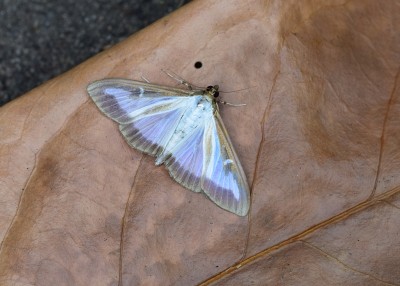
- Box-tree Moth - Coverdale 28.07.2022
Eucosma hohenwartiana is a fairly common micro whose larvae feed inside the flowers or seedheads of knapweed.
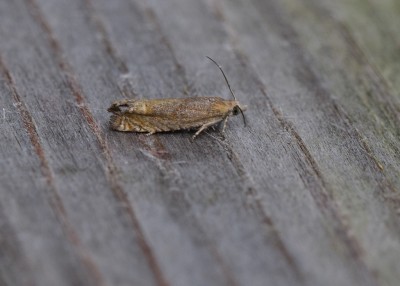
- Eucosma hohenwartiana - Coverdale 19.07.2022
Clavigesta purdeyi (Pine leaf-mining Moth) is a more local species that is expanding its distribution and whose larvae feed inside the needles of pine trees.
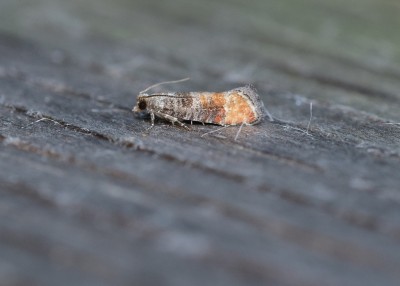
- Clavigesta purdeyi - Coverdale 21.08.2022
The Horse Chestnut Leaf Miner was probably the smallest moth that I recorded this year and although this species can sometimes occur in large
numbers, I have quite possibly overlooked it in the past due to its small size, something that I am likely to be guilty of with quite a few micros.
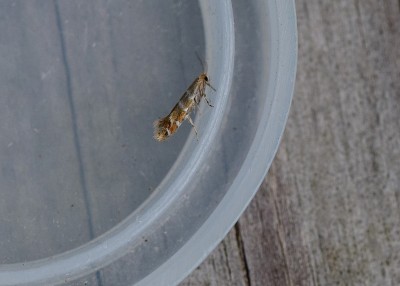
- Horse Chestnut Leaf Miner - Coverdale 19.07.2022
The Beet moth is a small micro which is usually restricted to coastal marshes on the south coast but there was a large population explosion in late August, probably caused or influenced by migrants and large numbers were recorded across the country for the next couple of weeks.
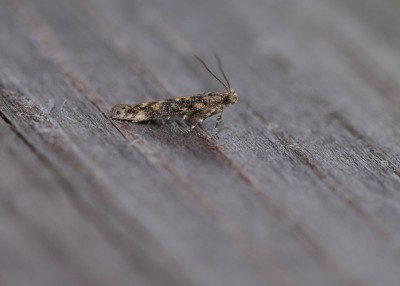
- Beet Moth - Coverdale 28.08.2022
Whilst not a NFG I also had a Toadflax Brocade, my second one here (my first was in 2020) and a notable record for my garden. I am aware of another one this year not far away in south Birmingham plus one elsewhere in Birmingham showing that they are definitely slowly expanding into this area.
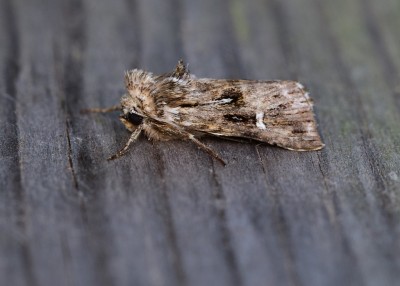
- Toadflax Brocade - Coverdale 22.05.2022
This year brought the total for my garden since I started running the moth trap here in April 2016 up to 368 species, made up of 228 macros, 133 micros plus 7 species of clearwing moths
This also shows that after nearly 6 years of trapping, there are still plenty of supposedly common moths that are still turning up here. Here's hoping that 2023 brings a few more.
Happy New Year Everyone.
Neil.